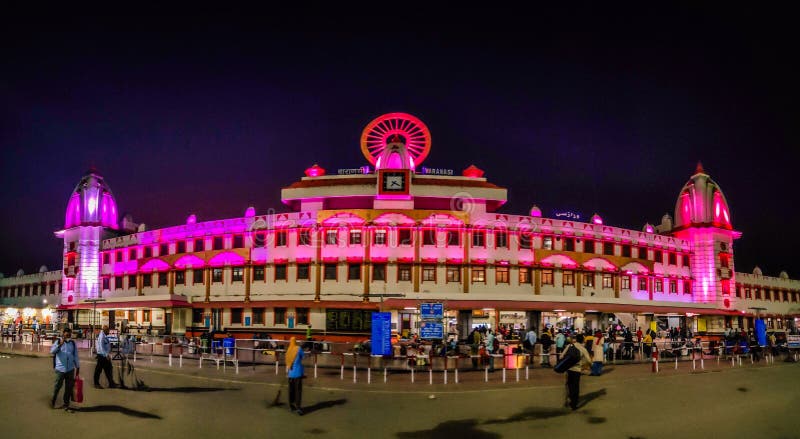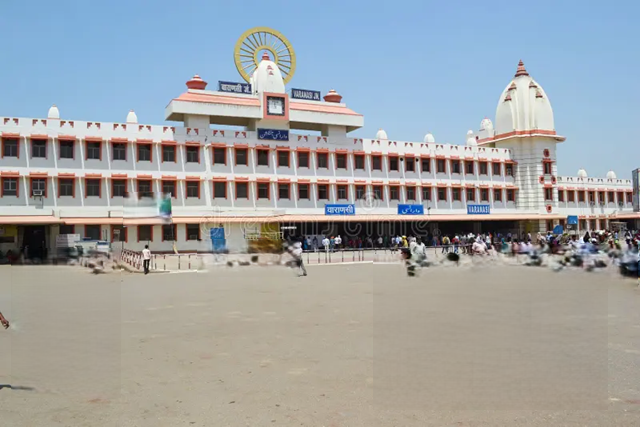Varanasi Junction Railway Station – Varanasi, one of the world’s oldest continuously inhabited cities, holds a special place in Indian culture, spirituality, and history. At the heart of this ancient city lies Varanasi Junction Railway Station, also known by its station code BSB. This bustling transportation hub plays a vital role in connecting pilgrims, tourists, and locals to the sacred city of Varanasi and beyond.
A Brief Overview
Varanasi Junction is the main railway station serving Varanasi, located in the state of Uttar Pradesh. It is one of the busiest and most important railway stations in Northern India and is operated by the North Eastern Railway zone of Indian Railways.
Situated close to the city center, Varanasi Junction links the city to nearly every major city across India. With hundreds of trains passing through daily, it serves as a vital artery in the country’s massive railway network.

Key Features and Infrastructure
-
Platform and Tracks
-
The station has 9 platforms, all well-connected via foot overbridges.
-
Multiple tracks run through the station, accommodating both express and local trains.
-
-
Connectivity
-
Varanasi Junction is directly connected to major cities like Delhi, Mumbai, Kolkata, Chennai, Lucknow, and Patna.
-
It serves as a hub for several superfast, mail, express, and passenger trains.
-
-
Facilities for Travelers
-
Waiting rooms for both general and upper-class passengers.
-
Clean restrooms, food stalls, bookshops, and water kiosks.
-
Free Wi-Fi, escalators, and digital boards displaying real-time train information.
-
Prepaid taxi and auto-rickshaw stands outside the station for easy local travel.
-
-
Security
-
The station is under constant surveillance with CCTV cameras.
-
Railway Protection Force (RPF) personnel are deployed to maintain order and safety.
-
Recent Developments and Modernization
In recent years, Varanasi Junction has undergone several upgrades as part of Indian Railways’ modernization plans:
-
Cleanliness and Beautification: Enhanced focus on maintaining hygiene and aesthetic appeal, including murals and cultural artwork reflecting the city’s spiritual heritage.
-
Digital Enhancements: Introduction of LED screens for train schedules, digital inquiry kiosks, and improved ticketing systems.
-
Passenger Amenities: Efforts to make the station more accessible for elderly and differently-abled travelers, including ramps, tactile tiles, and elevators.

Nearby Attractions
Located just a few kilometers from the station are some of the most iconic sites in Varanasi:
-
Kashi Vishwanath Temple – One of the most revered temples in Hinduism.
-
Dashashwamedh Ghat – Famous for the evening Ganga Aarti ceremony.
-
Sarnath – A major Buddhist pilgrimage site just a short drive away.
Importance of Varanasi Junction
More than just a train station, Varanasi Junction is a lifeline that connects millions of people to the cultural and spiritual soul of India. Whether you’re a pilgrim arriving for a dip in the Ganges, a tourist exploring centuries of history, or a local commuting for work, the station is where many journeys begin and end.
Its strategic location, high passenger volume, and role in promoting tourism make it one of the most significant railway stations in the country.
Final Thoughts
Varanasi Junction Railway Station is not just a stop on a map—it’s a gateway into the living, breathing spirit of India. With its rich cultural surroundings, modern facilities, and constant stream of travelers from all walks of life, it perfectly mirrors the dynamic and diverse soul of Varanasi itself.
Whether you’re planning a spiritual retreat, a cultural journey, or simply passing through, Varanasi Junction will likely be your starting point. And from there, the sacred city awaits.
Discover Nainital: Must-Visit Places in the Lake District of India

